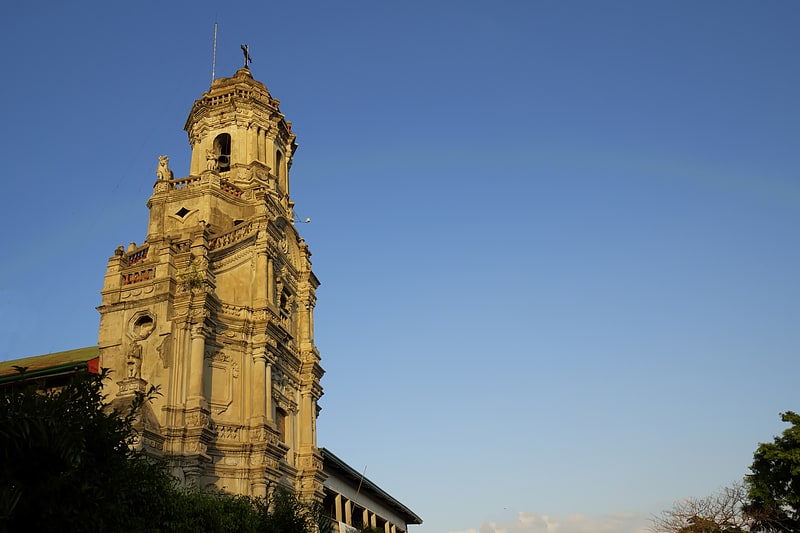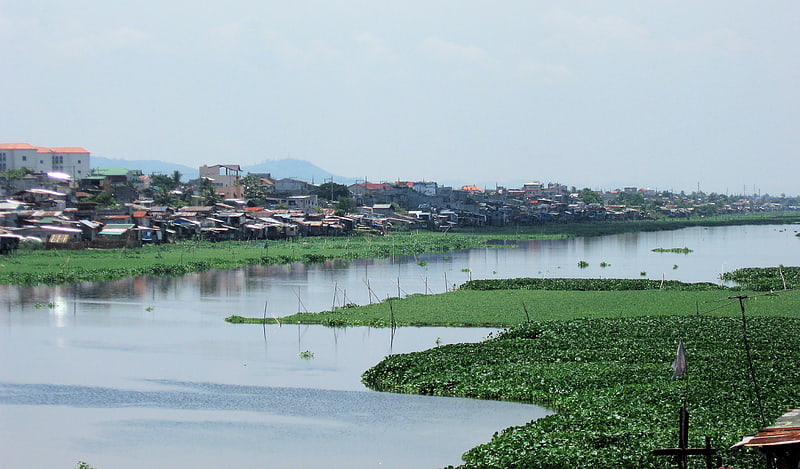Discover 4 hidden attractions, cool sights, and unusual things to do in Binangonan (Philippines). Don't miss out on these must-see attractions: Angono Petroglyphs, Morong, and San Nicolas de Tolentino Parish Church. Also, be sure to include Manggahan Floodway in your itinerary.
Below, you can find the list of the most amazing places you should visit in Binangonan (Rizal).
Table of Contents
Angono Petroglyphs

Ancient stone carvings in a rock shelter. The Angono Petroglyphs are petroglyphs carved into a rock wall in Angono, Rizal, Philippines. It consists of 127 human and animal figures engraved on the rockwall probably carved during the late Neolithic, or before 2000 BC. They are the oldest known work of art in the Philippines. These inscriptions clearly show stylized human figures, frogs and lizards, along with other designs that may have depicted other interesting figures but erosion may have caused it to become indistinguishable. The engravings are mostly symbolic representations and are associated with healing and sympathetic magic. The site is sacred for indigenous Tagalog folk religion and is believed to be a home for anitos.
The site has been declared by the National Museum of the Philippines as a National Cultural Treasure in 1973. It is also included in the list of the World Inventory of Rock Art in 1985 and historic sites of the World Monuments Watch and World Monuments Funds and part of the Philippines' tentative list of the UNESCO World Heritage Site.[1]
Morong

Municipality in the Philippines. Morong, officially the Municipality of Morong, is a 2nd class municipality located in the province of Rizal, Philippines. As per the 2020 census, Morong has a population of 71,151 people.
The town is also known for promoting education as its priority, with the vision "Una Ang Edukasyon" (Education First). During the early-1970s and early-1990s, Morong became a center of education with students from nearby towns of Rizal coming to study in the numerous academic institutions situated in the town.
Some popular town attraction are the St. Jerome's Parish Church built in the Spanish Era as well as the featuring side dish called balaw-balaw.[2]
San Nicolas de Tolentino Parish Church

Catholic church in Quezon City, Philippines. San Nicolas de Tolentino is a parish church in Quezon City. It belongs to the Roman Catholic Diocese of Cubao, under the Vicariate of Sto. Nino. It is under the care of the Augustinian Recollect Province of Saint Ezequiél Moreno.
The parish was named after San Nicolas de Tolentino, the patron saint of the poor souls in purgatory, whose feast day is celebrated on 10 September. Recollect fathers expanded their apostolate by building a church, which later became the center of a sprawling parish extending from Visayas Avenue in the east, to Mindanao Avenue in the west, from Carmel II in the south to Tandang Sora in the north.
Established on April 30, 1975, it was on May 11, 1975, that Fr. Alejandro Ramirez, OAR, was installed as the first parish priest, with Fr. Antonio Ausejo, OAR, and Fr. Clemente Jubera, OAR, as assistants. In response to the demand of the faithful, the parish was divided in two: Our Father Parish and Our Lady of Annunciation Parish were created within the San Nicholas de Tolentino territory. The Parish Priest is Father Delfin Castillo, OAR with estimated population of 10, 000 Catholics.[3]
Manggahan Floodway

River in the Philippines. The Manggahan Floodway is an artificially constructed waterway in Metro Manila, the Philippines. The floodway was built in 1986, with the cost of 1.1 billion pesos, in order to reduce the flooding along the Pasig River during the rainy season, by diverting the peak water flows of the Marikina River to the Laguna de Bay which serves as a temporary reservoir. In case the water level on the lake is higher than the Marikina River, the floodway can also reverse the flow.
By design, the Manggahan Floodway is capable of handling 2,400 cubic meters per second of water flow, although the actual flow is about 2,000 cubic meters per second. To complement the floodway, the Napindan Hydraulic Control System (NHCS) was built in 1983 at the confluence of the Marikina River and the Napindan Channel of the Pasig River to regulate the tidal flow of saline water between Manila Bay and the lake, and to prevent the intrusion of polluted water into the lake.
It has a fully gated diversion dam at its head and was designed with a width of 260 meters (850 ft). Over 40,000 households are situated along the floodway's banks and these shoreline slums have reduced its effective width to 220 meters (720 ft). Kangkong is cultivated extensively in the floodway as well.
The Manggahan Floodway was supposed to function together with the proposed Paranaque Spillway Project, a spillway that would direct flood waters from Laguna de Bay to Manila Bay. However, after President Ferdinand Marcos had been removed from office in 1986, the spillway project was cancelled.[4]